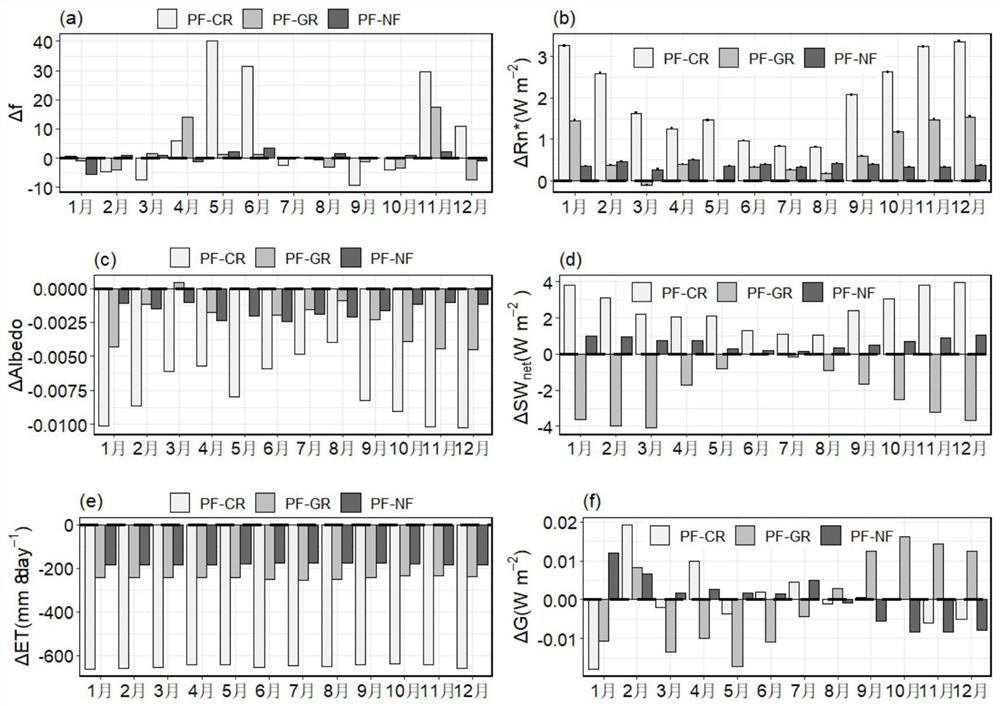Method for responding to surface temperature of afforestation based on multi-source remote sensing and energy balance model
A surface temperature and energy balance technology, applied in special data processing applications, computer-aided design, design optimization/simulation, etc., can solve the problem of lack of temporal and spatial information on surface changes, unclear regional temperature changes, inability to achieve afforestation and its regional temperature Problems such as changing spatiotemporal scale expansion
- Summary
- Abstract
- Description
- Claims
- Application Information
AI Technical Summary
Problems solved by technology
Method used
Image
Examples
Embodiment 1
[0042] like figure 1 The method shown in response to surface temperature changes based on multi-source remote sensing and energy balancing model, including the following steps: first collecting available remote sensing and climate data, and land coverage data, using spatial analysis to generate high resolution Unchangeable afforestation spatiotemporal distribution maps, including artificial forests, natural forests and open places (grassland and farmland), then the acquired data is measured to measure, unified resolution, and through mobile window space sampling methods, radiation, Soil thermal flux, satellite surface temperature and air temperature energy redistribution factor estimation, finally, based on the energy re-allocation factor, researcies, researchers, soil heat flux, calculate the effect of factor on surface temperature, The three summation is the effect of afforestation on surface temperature.
[0043] 1) Data acquisition
[0044] Taking Guangdong Province as an exam...
PUM
 Login to View More
Login to View More Abstract
Description
Claims
Application Information
 Login to View More
Login to View More - R&D
- Intellectual Property
- Life Sciences
- Materials
- Tech Scout
- Unparalleled Data Quality
- Higher Quality Content
- 60% Fewer Hallucinations
Browse by: Latest US Patents, China's latest patents, Technical Efficacy Thesaurus, Application Domain, Technology Topic, Popular Technical Reports.
© 2025 PatSnap. All rights reserved.Legal|Privacy policy|Modern Slavery Act Transparency Statement|Sitemap|About US| Contact US: help@patsnap.com



